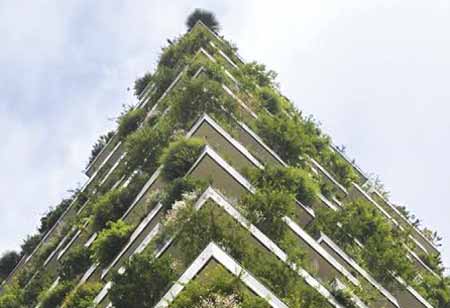THANK YOU FOR SUBSCRIBING

Revolutionizing Construction Administration With AI, Drones, And Cameras
Raymond Kent, ASTC, Assoc AIA, LEED BD+C, Chief Operating Officer, Executive Vice President, Red Dragon Arts

 Raymond Kent, ASTC, Assoc AIA, LEED BD+C, Chief Operating Officer, Executive Vice President, Red Dragon Arts
Raymond Kent, ASTC, Assoc AIA, LEED BD+C, Chief Operating Officer, Executive Vice President, Red Dragon ArtsRaymond Kent, ASTC, Assoc AIA LEED AP, is the Chief Operating Officer and Executive Vice President for Red Dragon Arts, an arts management, operations, and facilities consultancy that works with clients to help them manage and operate to align with their mission and vision before undertaking major renovations or new construction. Additionally, Raymond has extensive award-winning experience in architecture and engineering, leading international projects alongside global A/E brands within the cultural and performing arts for top-tier clients. Raymond has a passion for sustainability and Universal Design in the arts, authoring and presenting on these and many other topics that directly impact how the built environment is developed and operated.
Through this article, Kent highlights how AI-powered drones and cameras revolutionize construction by improving accuracy, efficiency, and real-time decision-making during project execution.
Traditionally cautious in adopting digital innovations, the construction industry is now experiencing significant transformation. Driven by the complexities of modern projects, tightening profit margins, and escalating owner expectations, there’s an undeniable push for enhanced efficiency, transparency, and control. This is especially critical during the construction administration (CA) phase, where designs become reality. Here, construction managers (CMs) and owners face the ongoing challenges of managing progress, ensuring quality, controlling costs, and minimizing disruptive change orders. A potent combination of Artificial Intelligence (AI), Unmanned Aerial Vehicles (drones), and strategically deployed site cameras is emerging as a game-changing solution to redefine project management and delivery.
Historically, construction site monitoring has been a demanding, hands-on endeavor. CMs and superintendents dedicate substantial time to site walk-throughs, manual inspections, measurements, and report compilation. Design teams often undertake periodic, costly, and time-consuming site visits to confirm compliance with their plans. Such reliance on manual methods frequently results in incomplete data, subjective evaluations, and delayed identification of issues, ultimately leading to increased costs and schedule overruns. Change orders, a frequent source of frustration, often stem from discrepancies found late in the construction process, design ambiguities only recognized during execution, or unforeseen site conditions that more comprehensive, earlier data collection might have preempted.
“A potent combination of Artificial Intelligence (AI), Unmanned Aerial Vehicles (drones), and strategically deployed site cameras is emerging as a game-changing solution to redefine project management and delivery”
The advent of new technologies, particularly drones and site cameras analyzed by AI, signifies a paradigm shift. Drones, outfitted with high-resolution cameras, LiDAR scanners, and thermal imagers, can swiftly and safely survey large or hard-to-reach construction site areas. They capture detailed aerial imagery, generate precise 3D point clouds, and create orthomosaic maps. Simultaneously, fixed site cameras, including 360-degree and time-lapse models, offer continuous visual records of ongoing activities from key perspectives. This data can be gathered daily or even in real-time, providing up-to-the-minute insights.
While the sheer volume of this raw visual data could be overwhelming, AI algorithms—especially machine learning (ML) and computer vision—are engineered to process, analyze, and interpret these vast datasets. AI’s capabilities in this domain are multifaceted. It can automate progress tracking by comparing site scans from drones or cameras against the Building Information Model (BIM) and project schedule, automatically flagging elements as complete, in progress, or delayed. This offers near real-time, objective progress reports that far surpass the accuracy and frequency of manual methods. AI also significantly enhances quality control by detecting deviations from design specifications, such as incorrect material installations, improper dimensions, or missing components; for instance, it can analyze imagery to verify rebar spacing before concrete is poured or confirm the correct structural steel placement. Furthermore, AI-powered computer vision can identify safety hazards by monitoring sites for potential violations like missing PPE, unsecured equipment, or workers near hazardous zones, enabling proactive safety measures. Finally, drone and camera data can be processed by AI to generate highly accurate as-built models, providing an exact record of construction that is valuable for future maintenance, renovations, and dispute resolution.
The impact on overall on-site efficiency and workflow streamlining is profound. Construction managers can significantly reduce time spent on manual data collection and report generation, allowing them to focus on higher-value activities like problem-solving and stakeholder communication. AI-driven platforms facilitate automated reporting by generating daily or weekly progress updates, complete with visuals and key metrics, distributed automatically to stakeholders, thus keeping everyone informed and minimizing lengthy meetings. Logistics are optimized as AI analyzes site activity to identify potential bottlenecks in material delivery or crew deployment, and drones can quickly assess stockpile volumes to ensure material availability. Crucially, the early identification of errors or deviations means they can be rectified before substantial work is built upon them, drastically reducing costly and time-consuming rework. For example, an AI-flagged misaligned foundation from drone data can be addressed within hours, a far more straightforward fix than if discovered weeks later.
This technological synergy is also pivotal in slashing change orders, contributing to project delays and budget overruns. The AI-drone-camera combination directly addresses their root causes. It enables early clash detection in the field; At the same time, BIM aids pre-construction clash detection, AI’s continuous visual monitoring compares installed work against the coordinated BIM model, flagging deviations or inter-trade clashes (e.g., MEP systems conflicting with structural elements) much sooner than traditional inspections. For renovation or addition projects, drones rapidly capture precise existing conditions data, which AI integrates with new designs to proactively highlight potential conflicts or necessary modifications. Moreover, in disputes over work quality or progress, objectively analyzed by AI, the comprehensive, time-stamped visual record from cameras and drones provides irrefutable evidence, often preventing or swiftly resolving arguments and claims that might otherwise escalate into change orders.
Integrating AI with drone and site camera technology within the built environment offers a transformative pathway for the construction industry. Automating tedious processes, providing unprecedented insight, and enabling proactive problem-solving empower construction managers and owners to navigate the construction administration phase with greater efficiency, reduced risk, and improved cost control, ultimately leading to more successful project outcomes.
Read Also
The evolution of commercial office developments through digital twins
Navigating the MITS Landscape in an AI-Focused Future
Embedding QHSE Excellence in Global Engineering Operations
Sustainability In Construction - The Startups Tackling The Challenge
The Thursday Morning Sprint: A Lesson in Preconstruction Planning
AI's Impact on Construction Workflow Automation

 Copyright © 2025 All Rights Reserved | by:
Copyright © 2025 All Rights Reserved | by: Construction Tech Review
| Subscribe | About us | Sitemap| Editorial Policy| Feedback Policy














